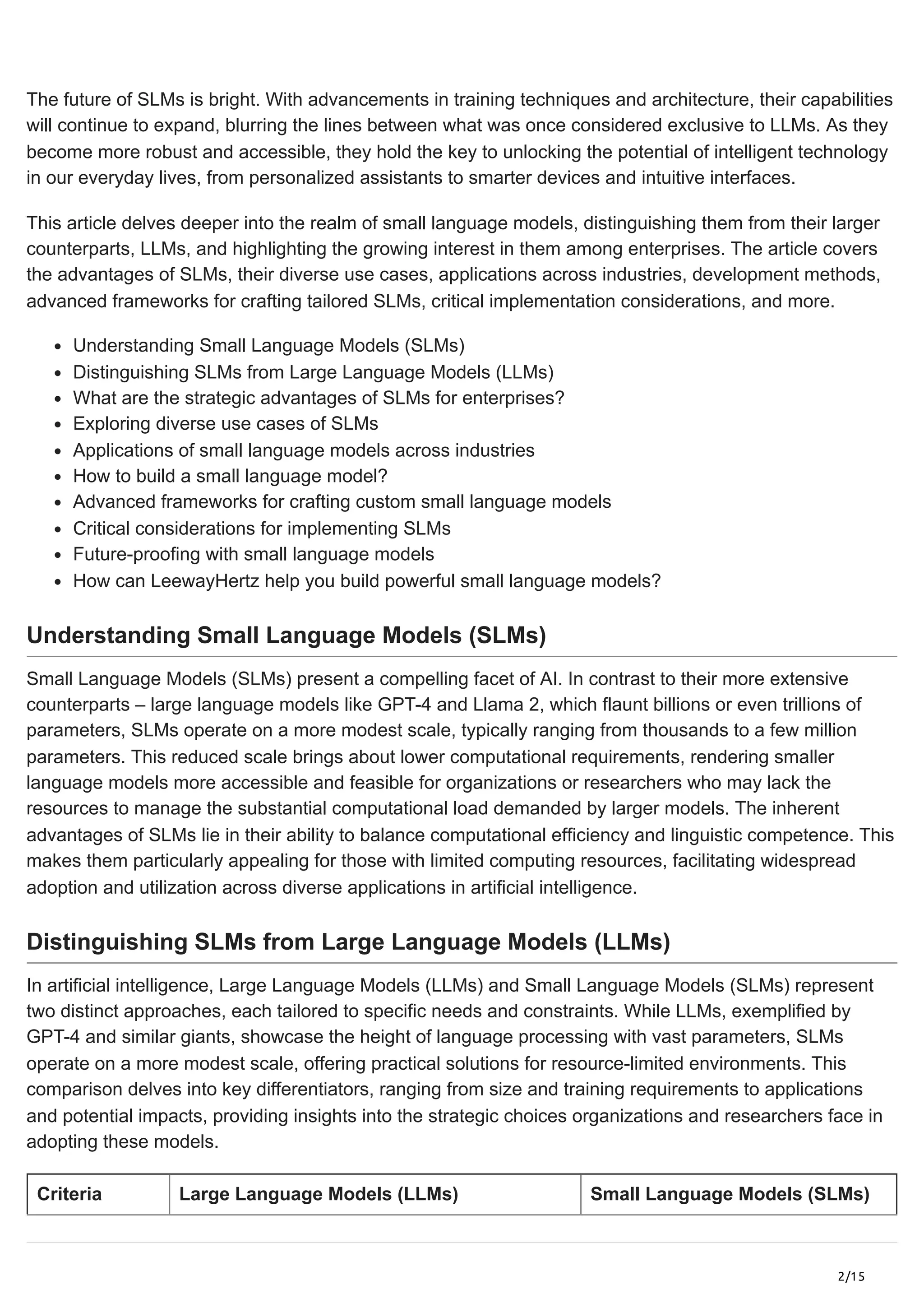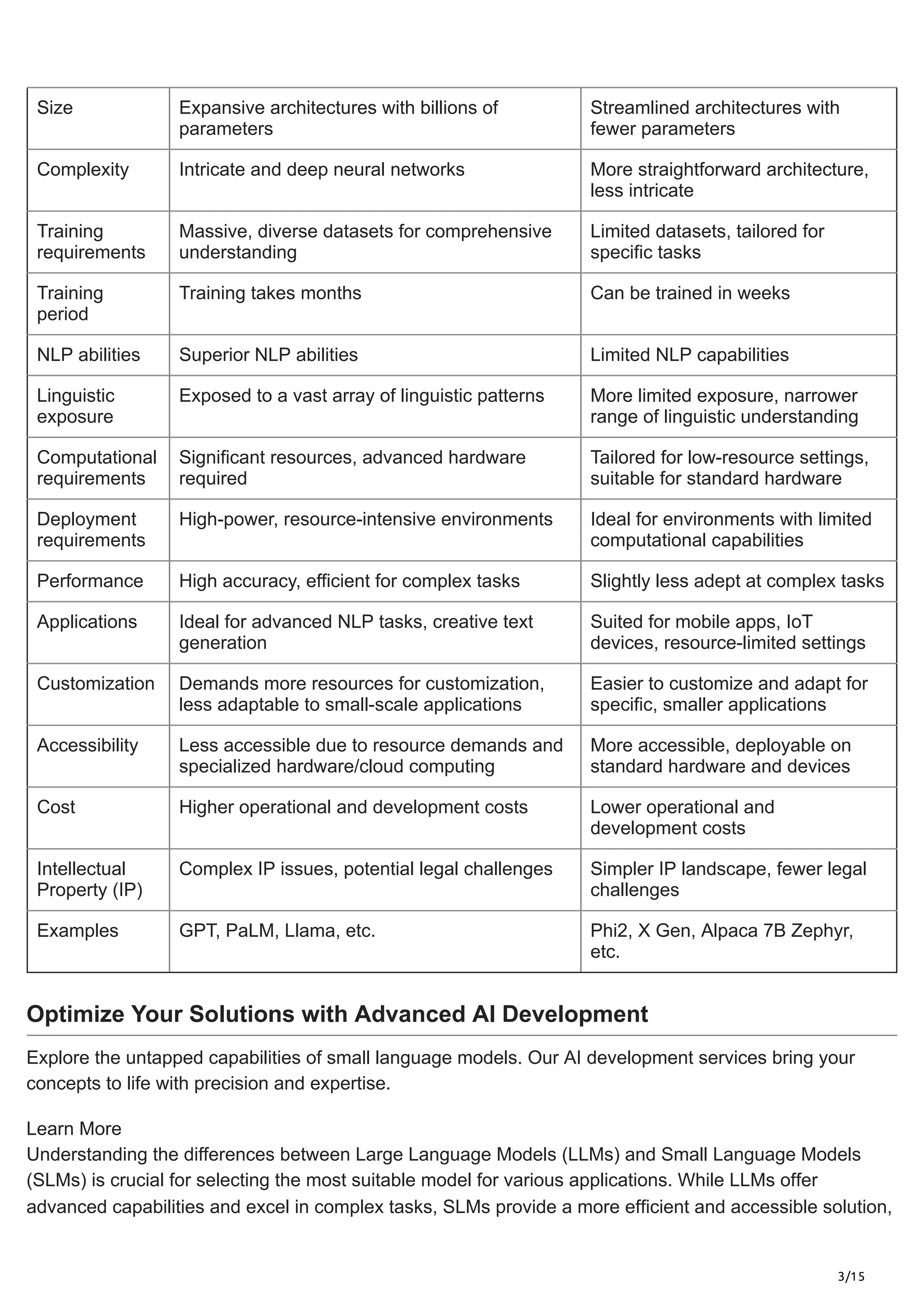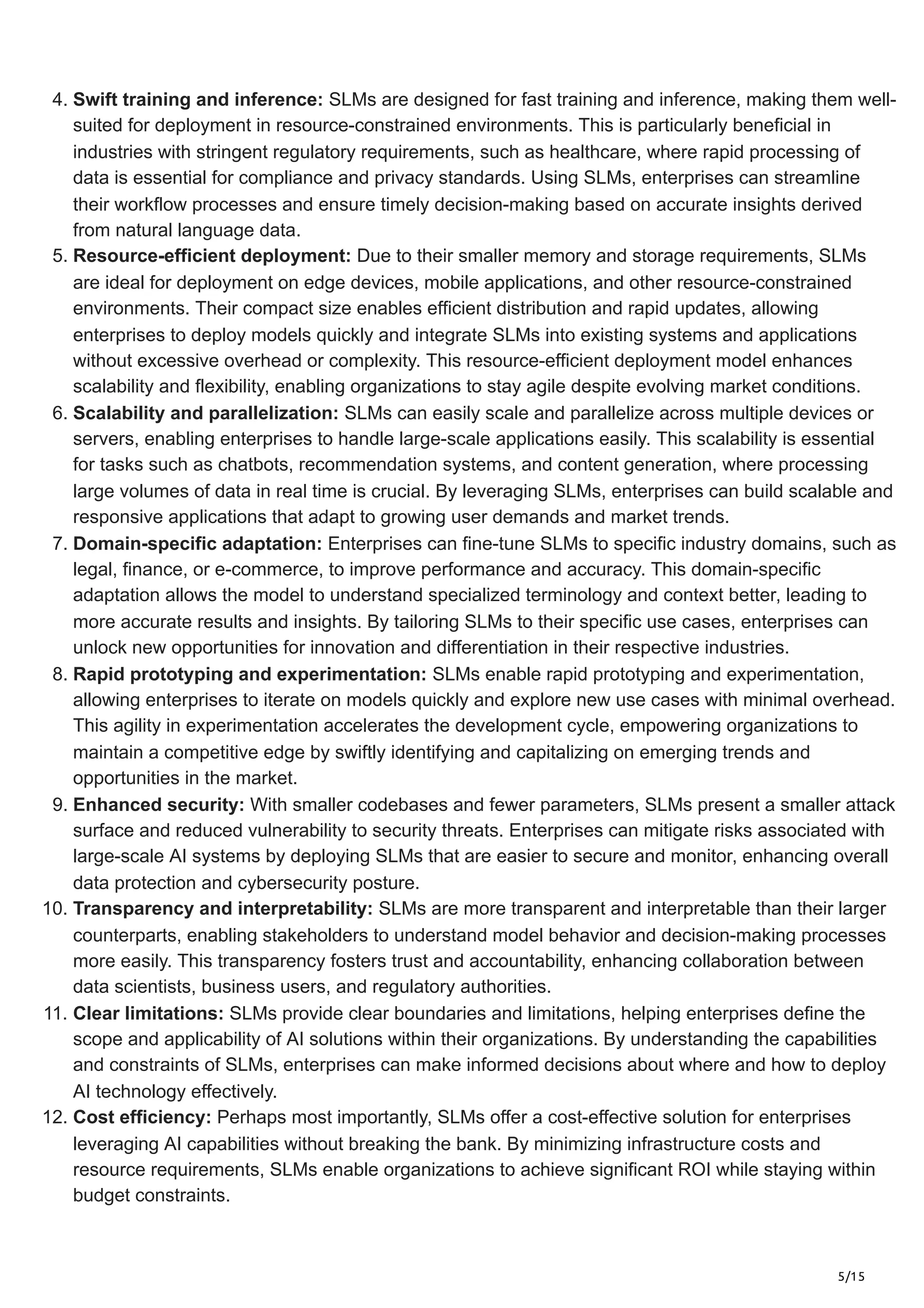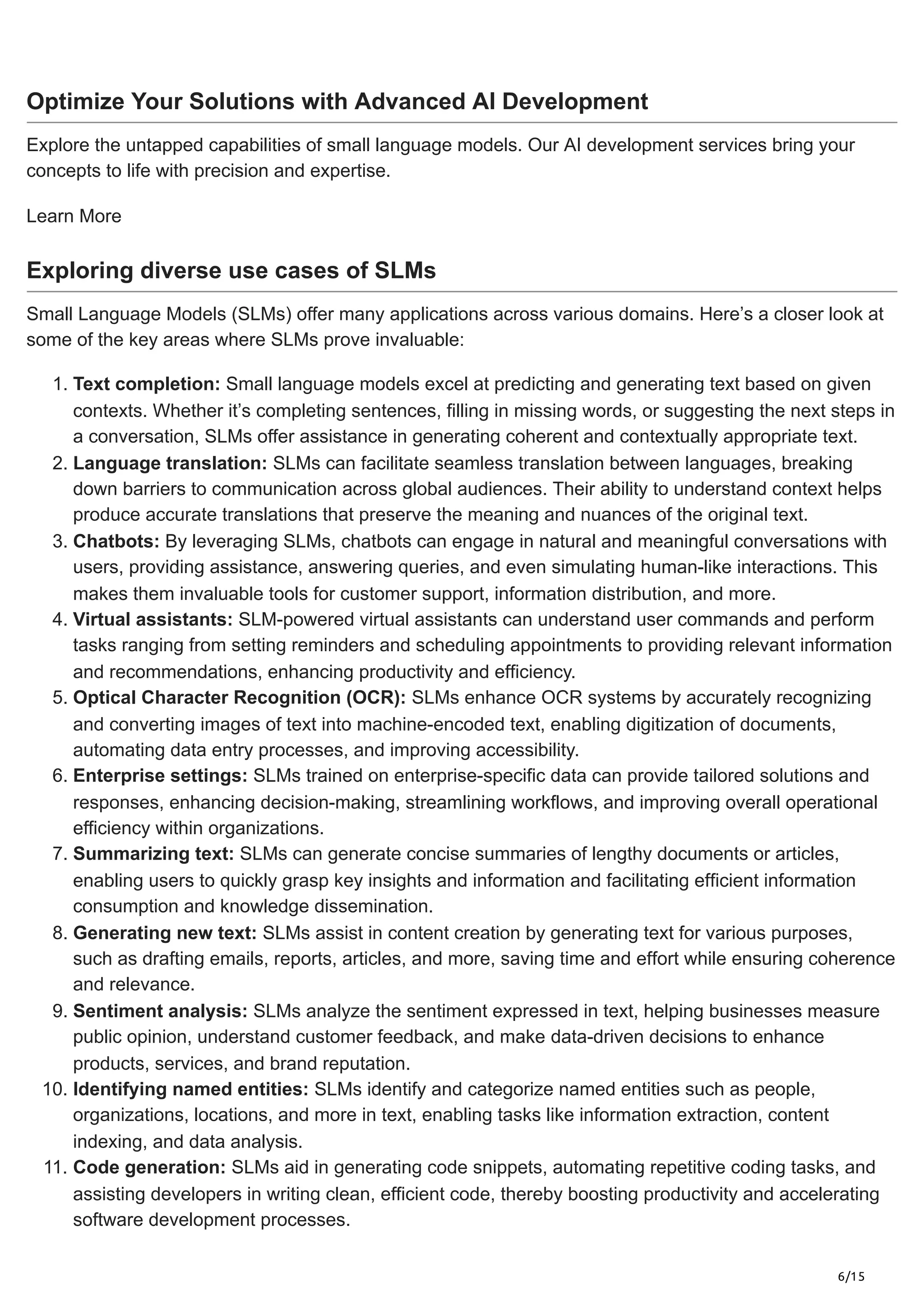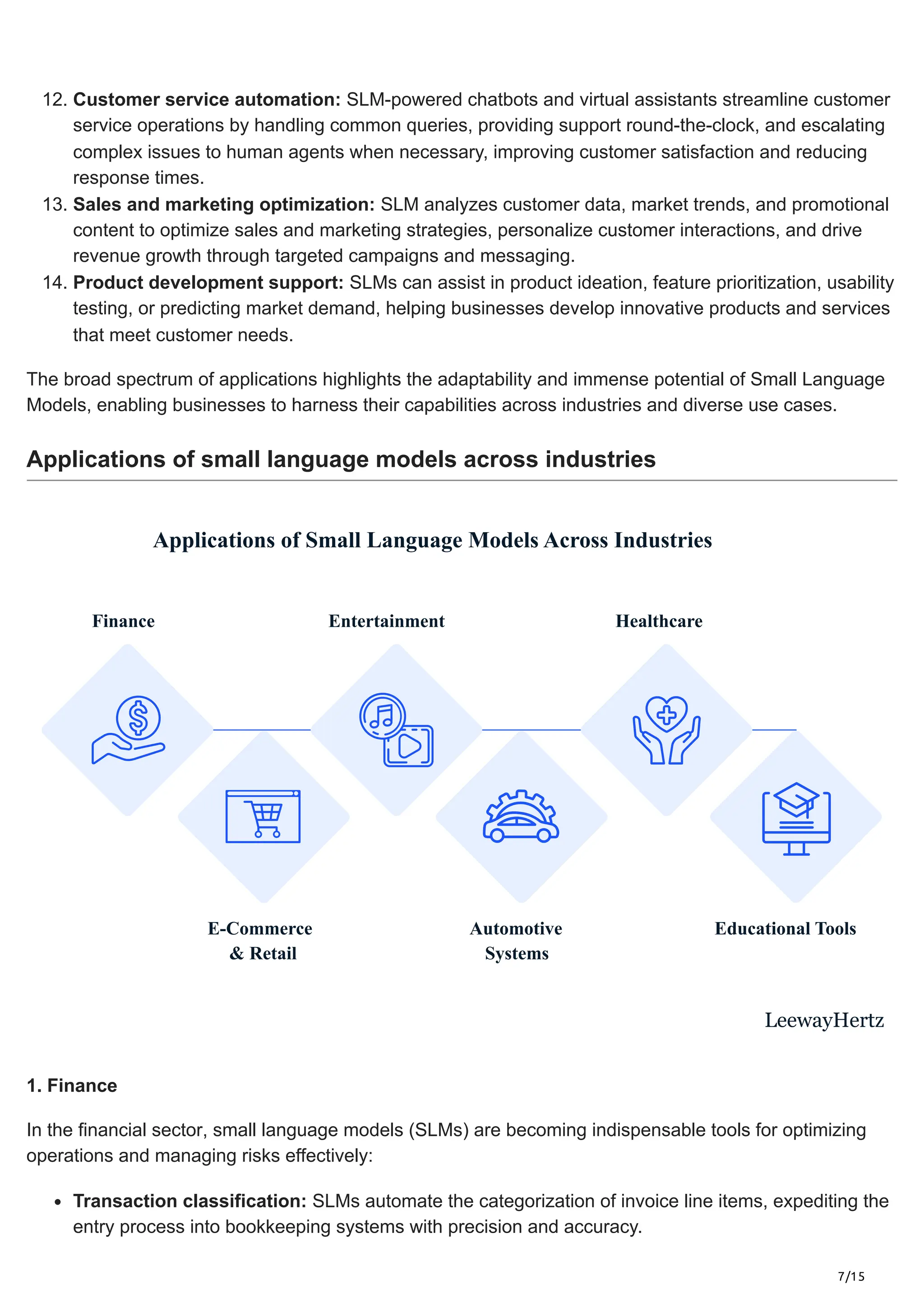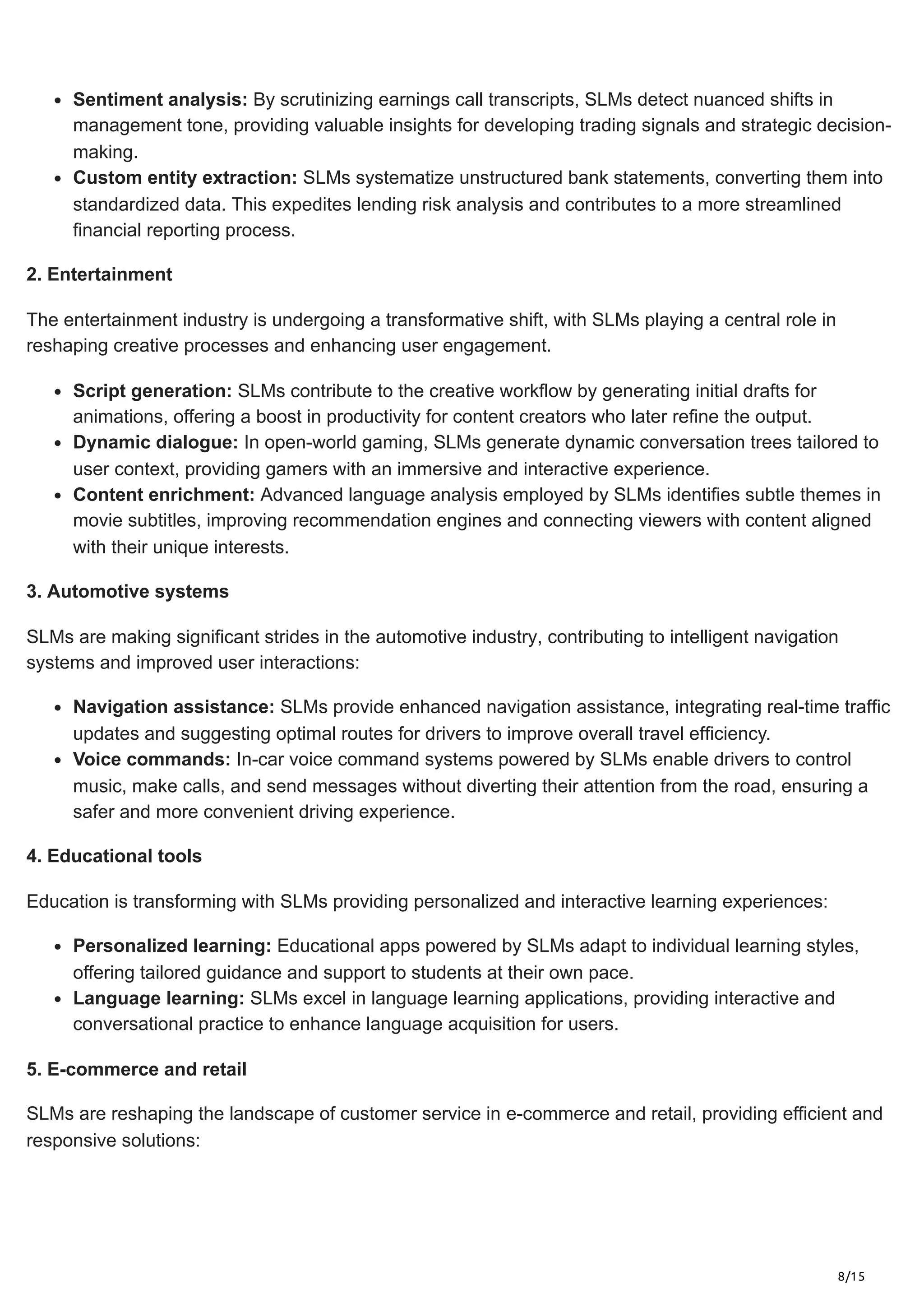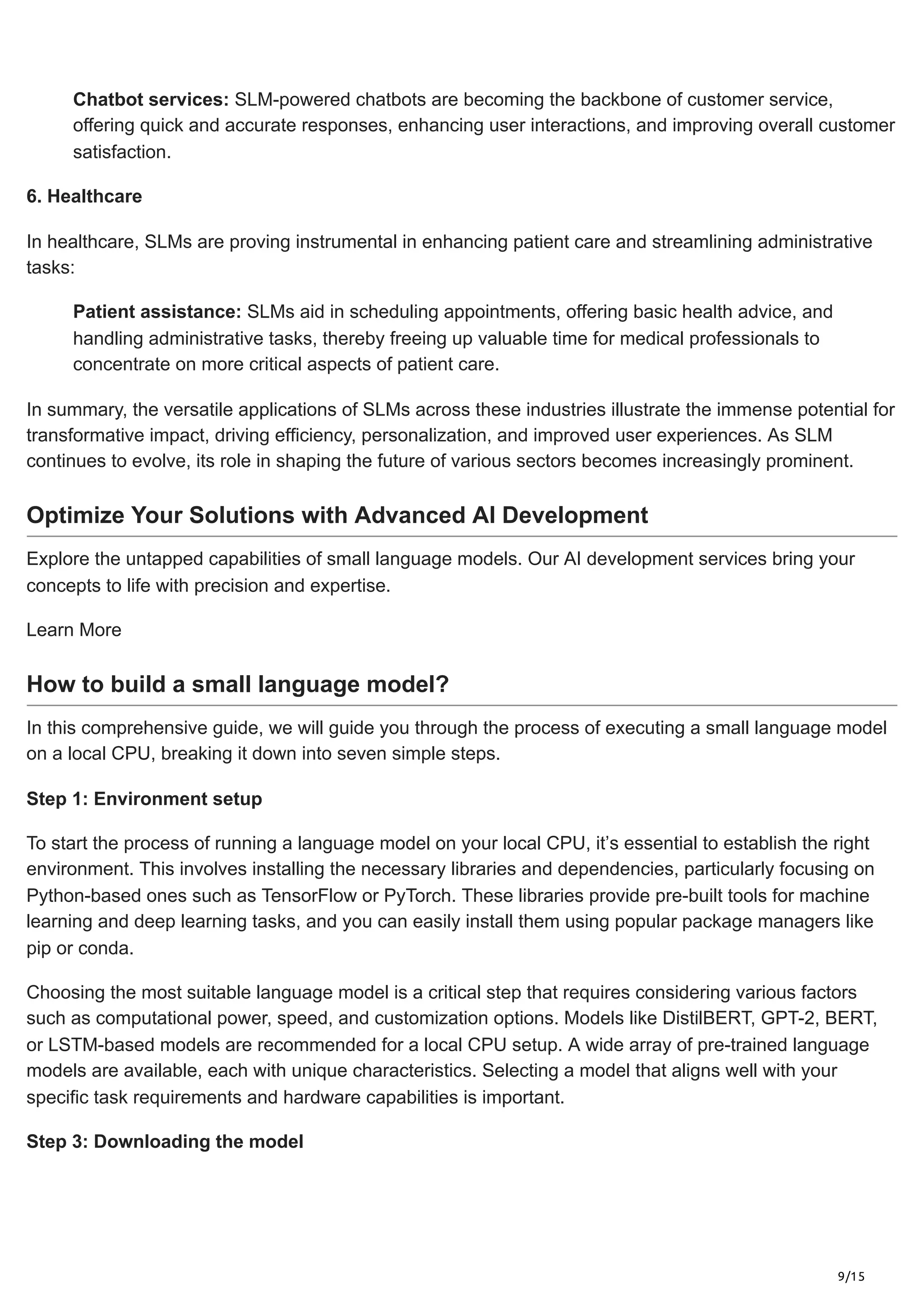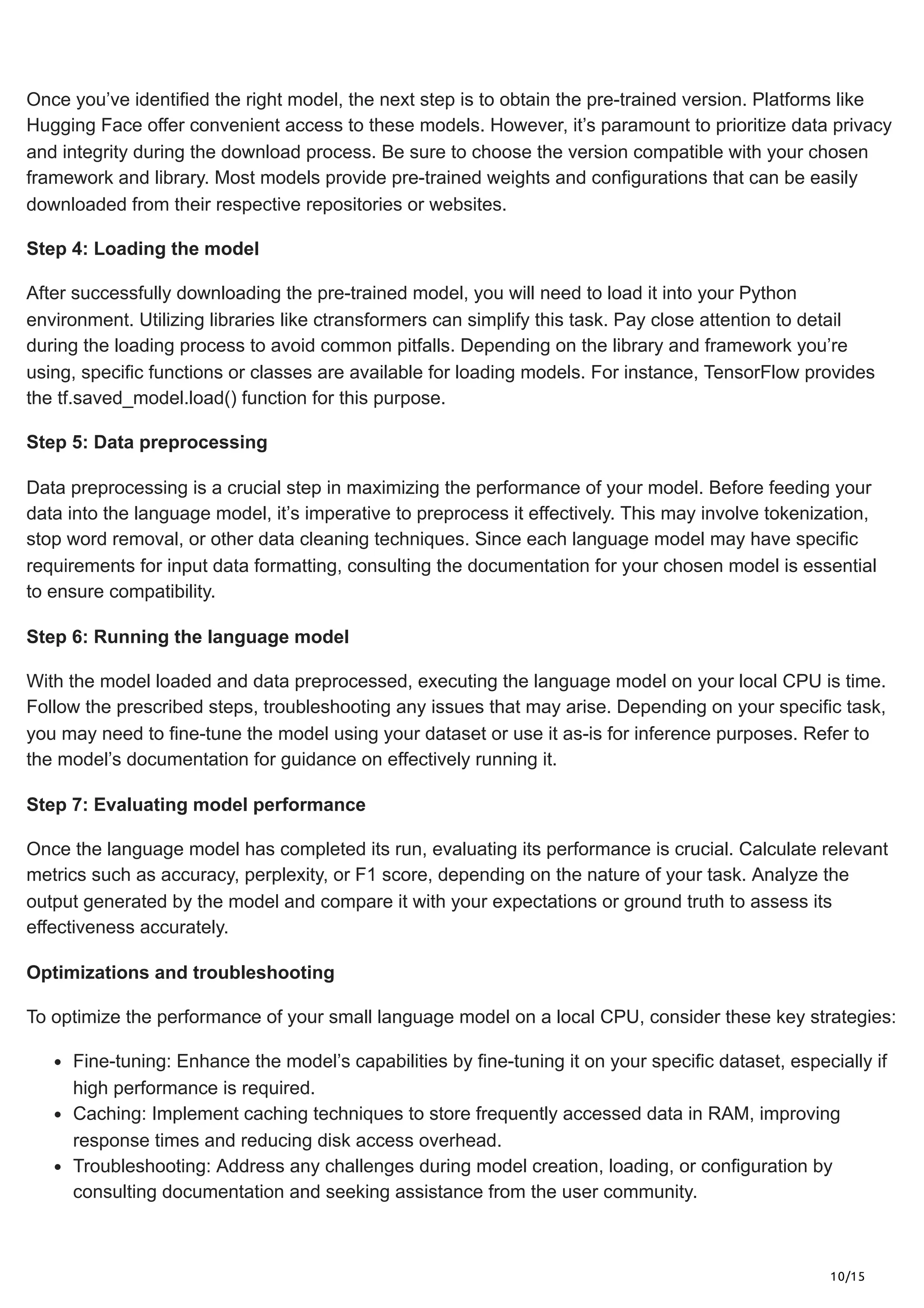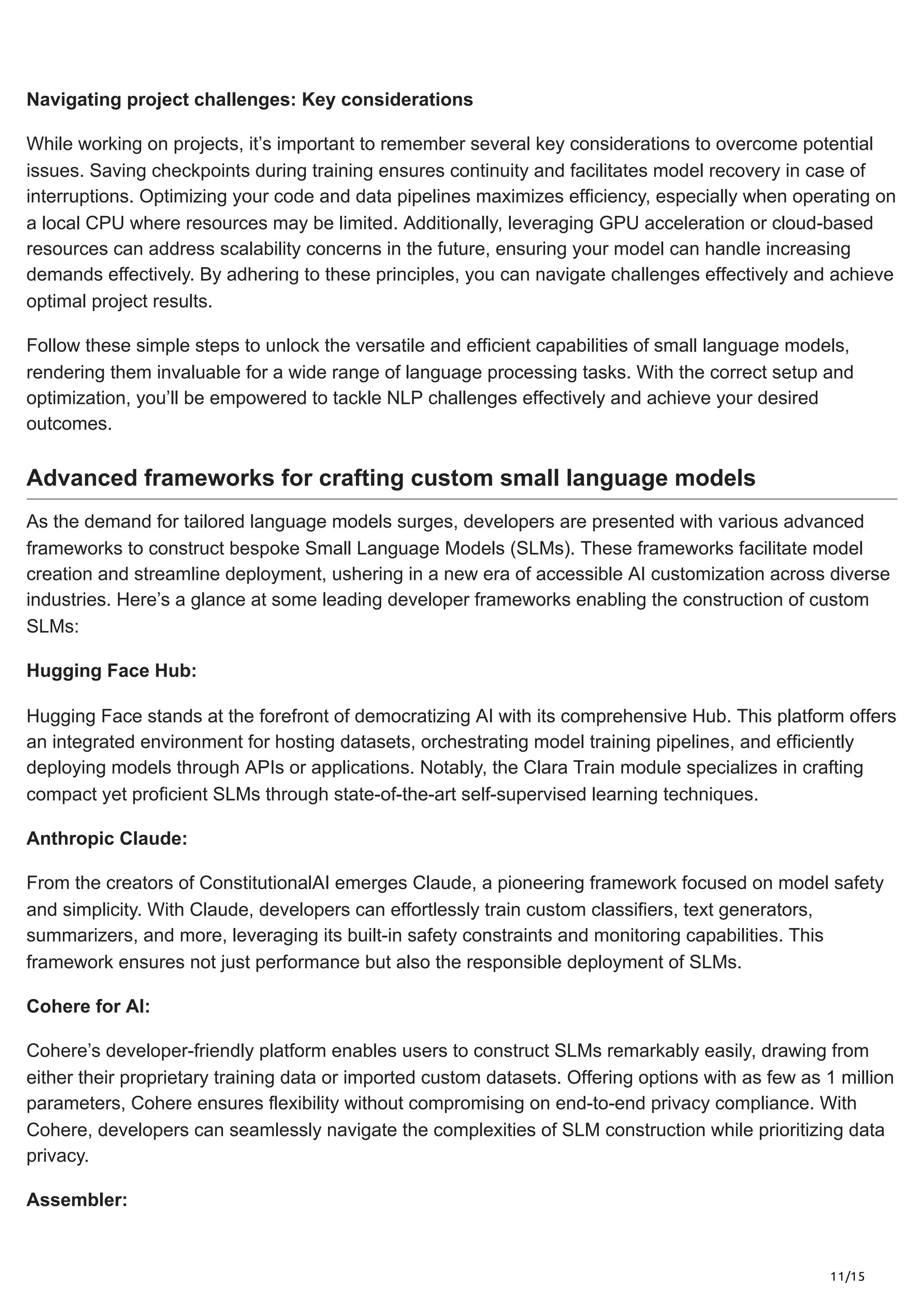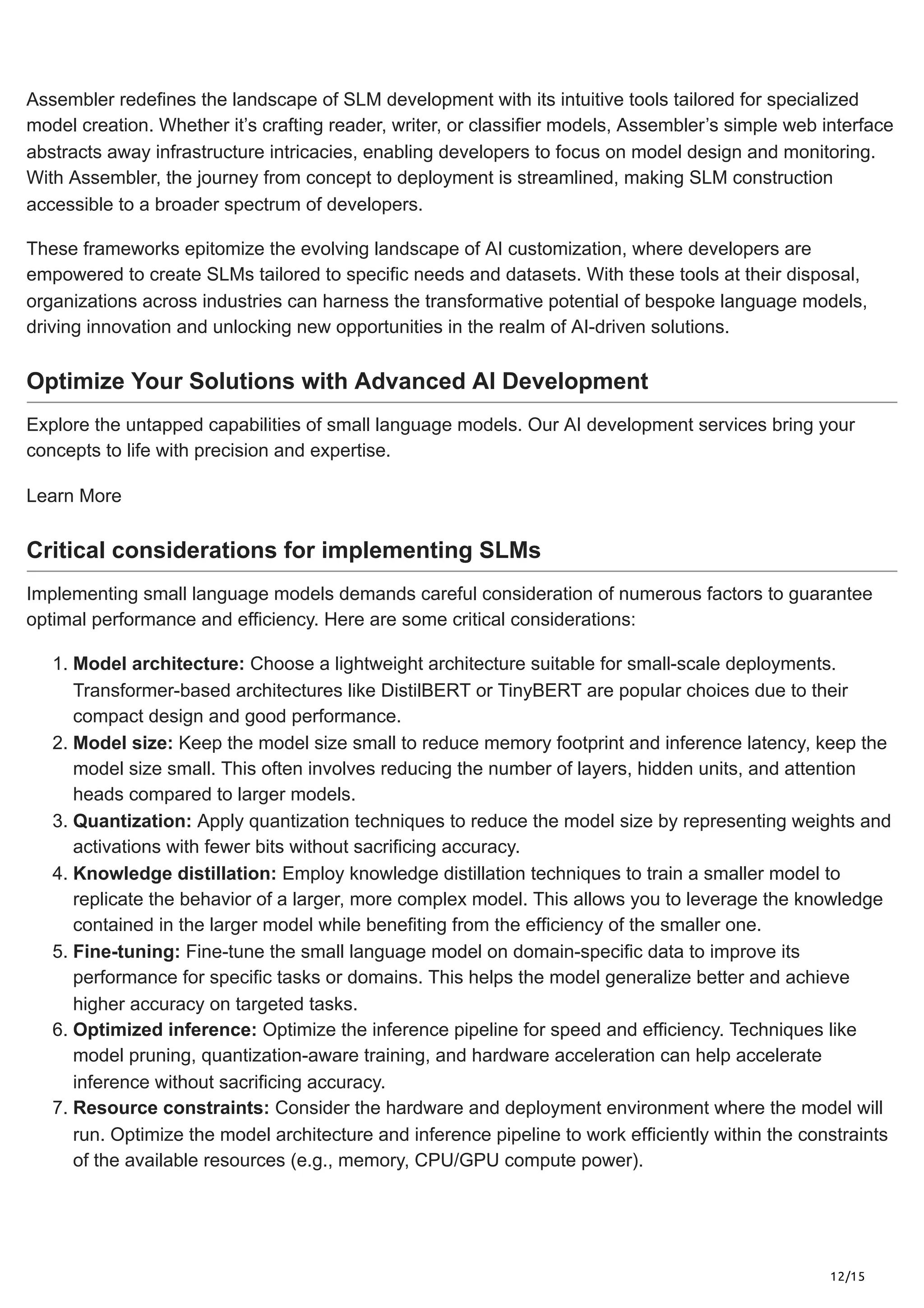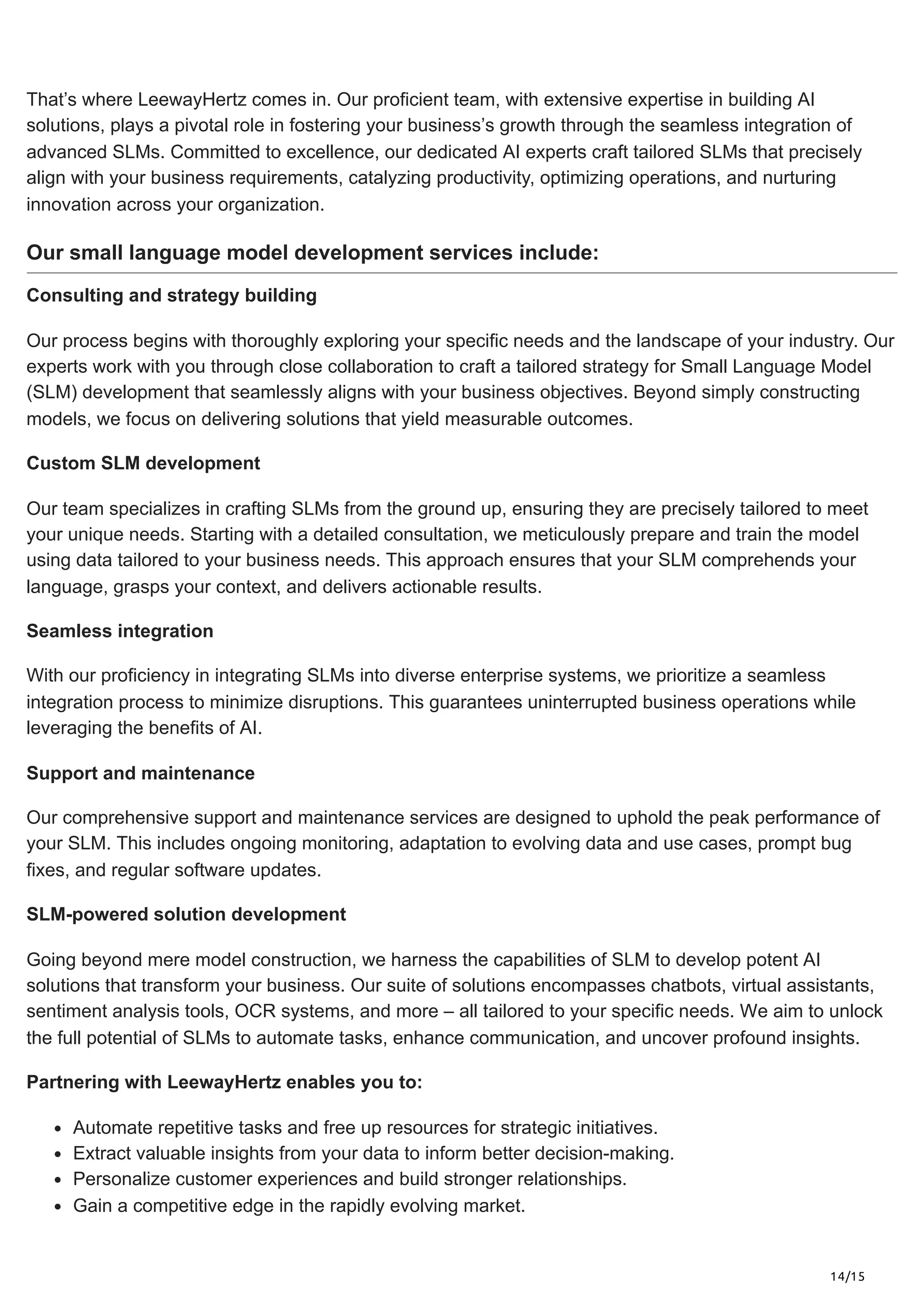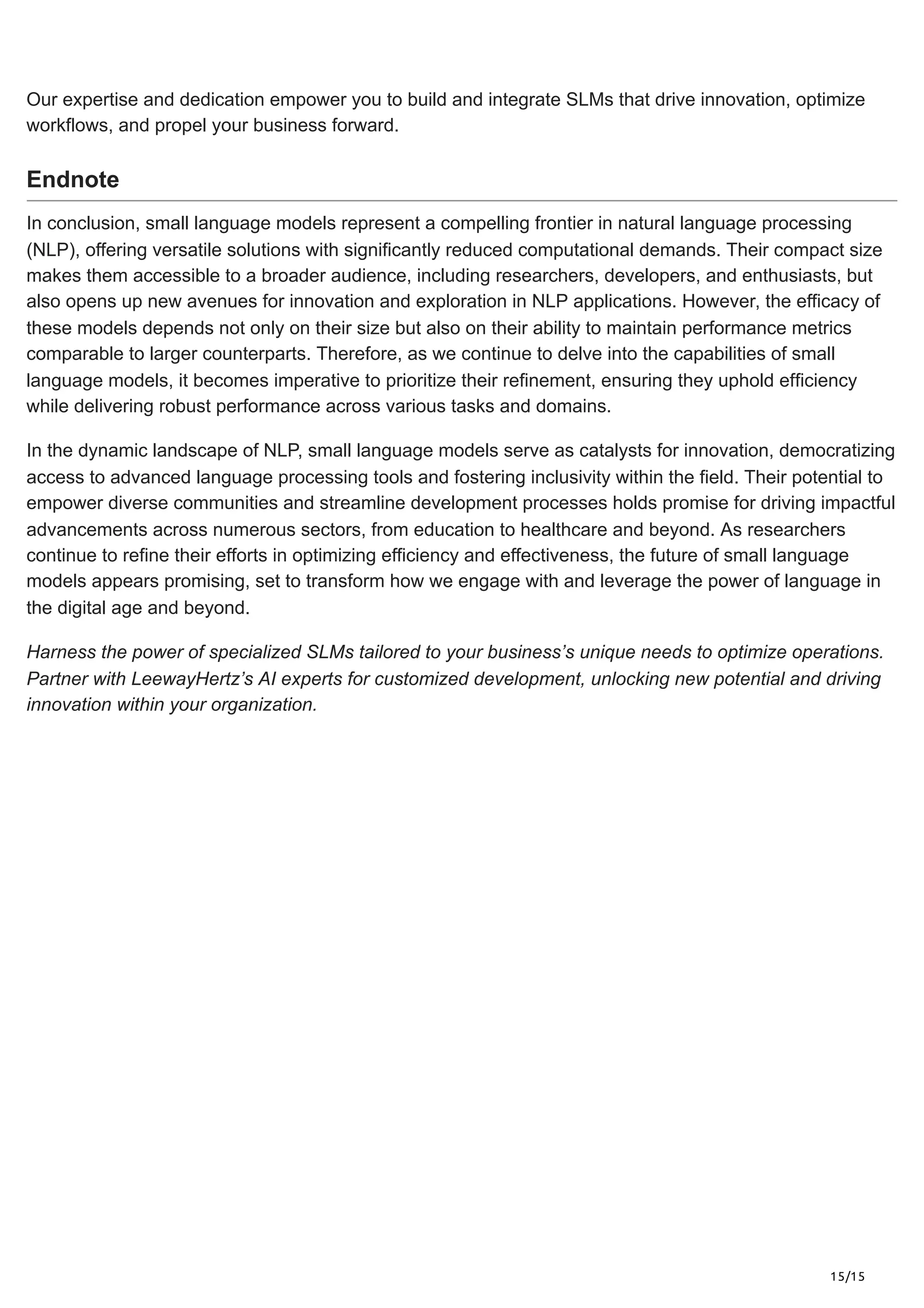Small language models (SLMs) are emerging as efficient alternatives to large language models (LLMs), requiring less computational power and enabling deployment on mobile devices. SLMs are highly customizable and perform well in specific domains, making them appealing for enterprises looking for cost-effective AI solutions. The document explores various applications of SLMs across industries, highlights their advantages, and provides insights into how to build a small language model.

